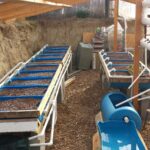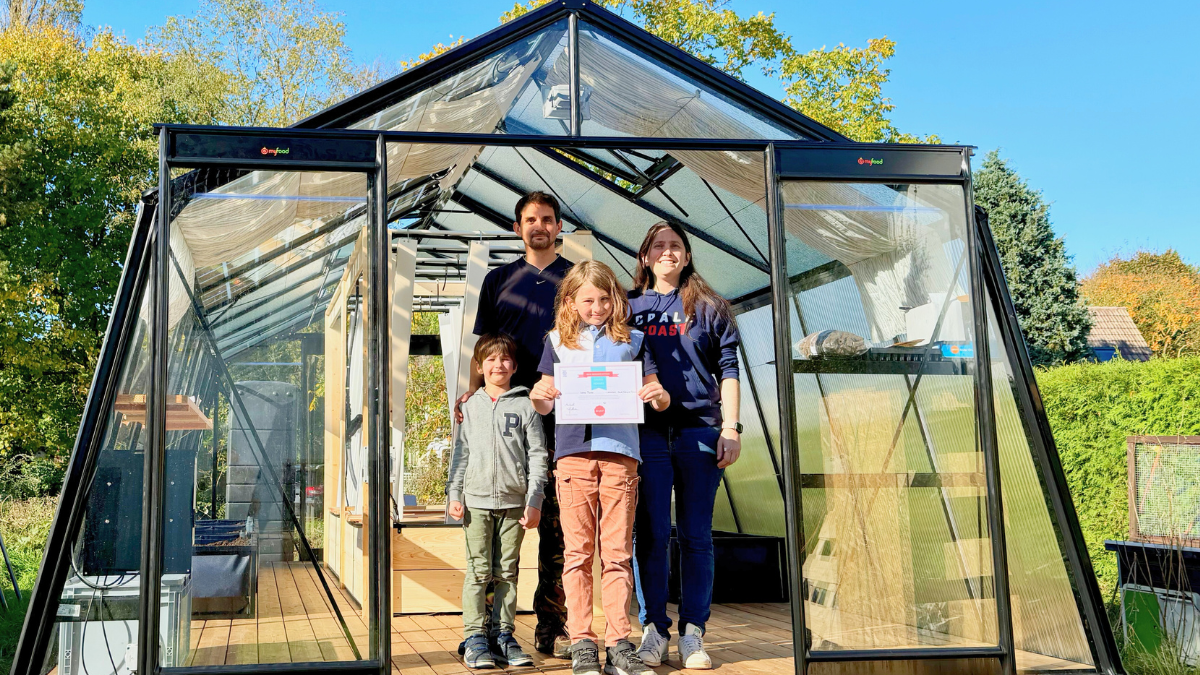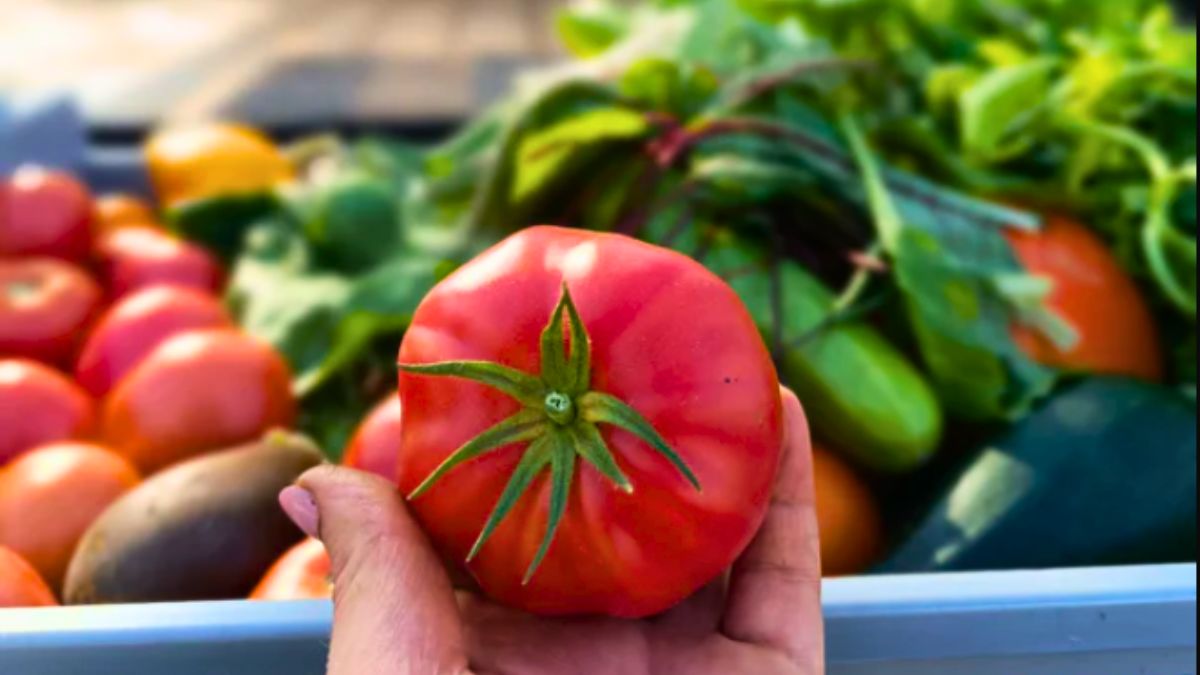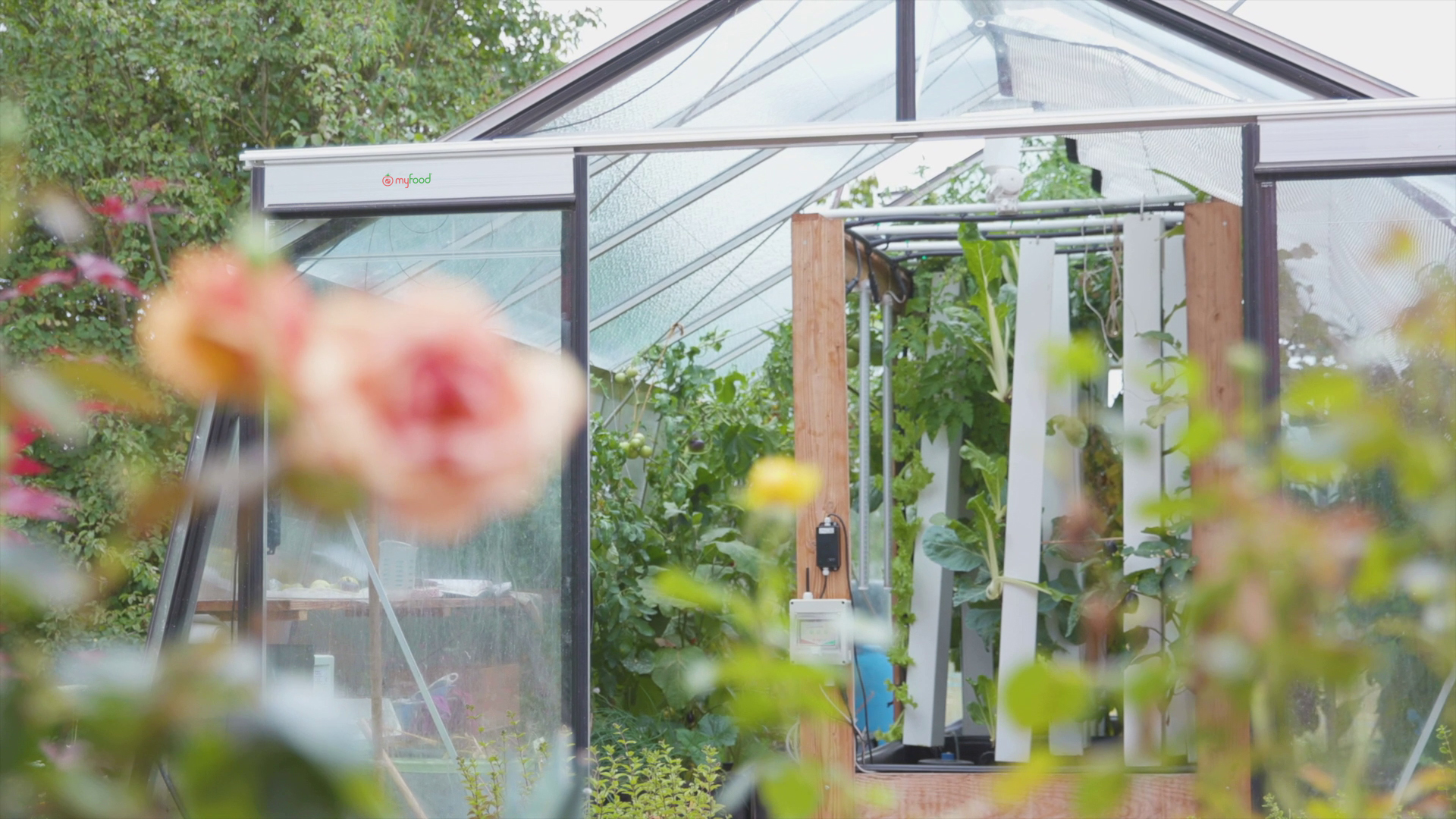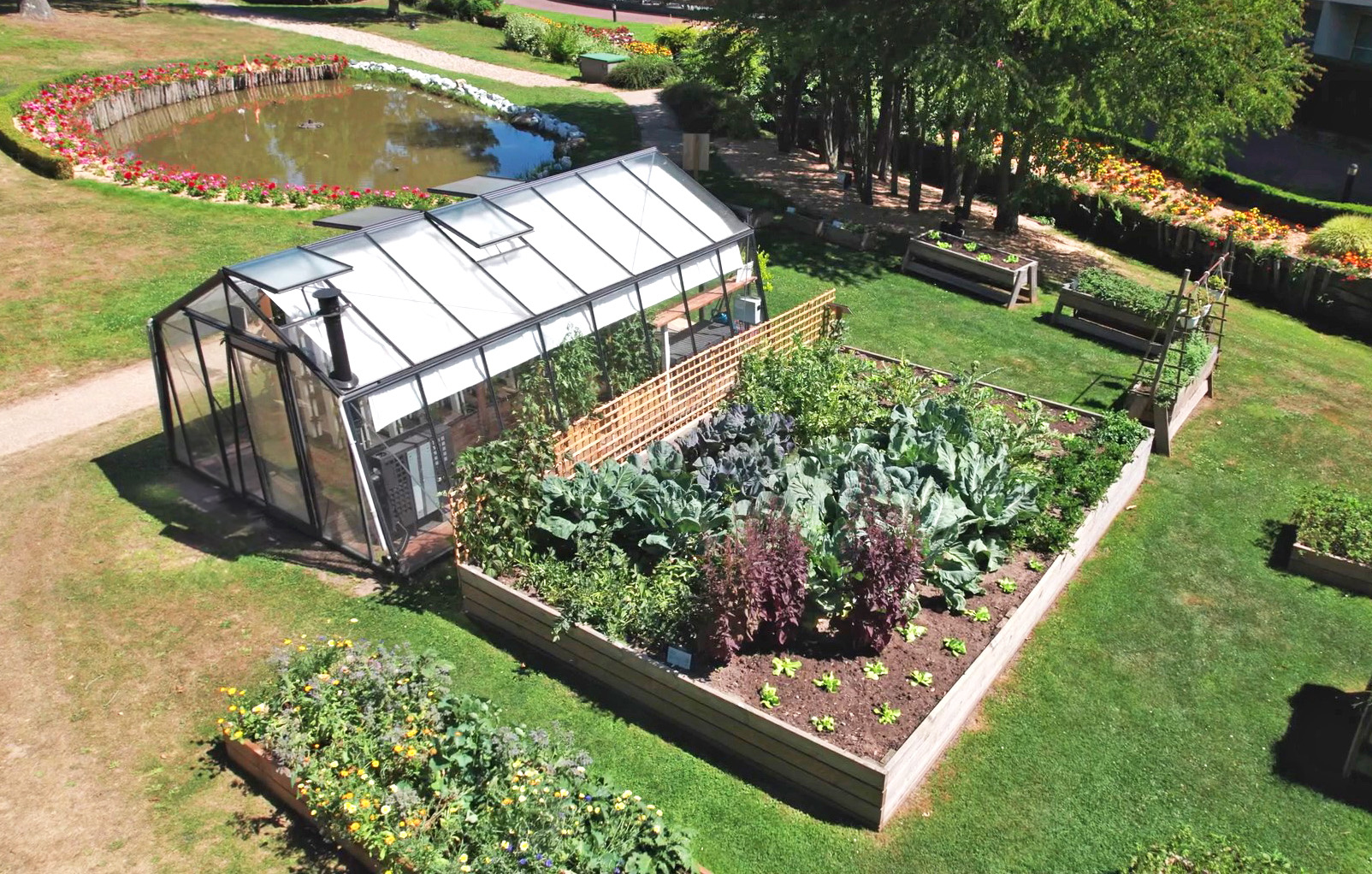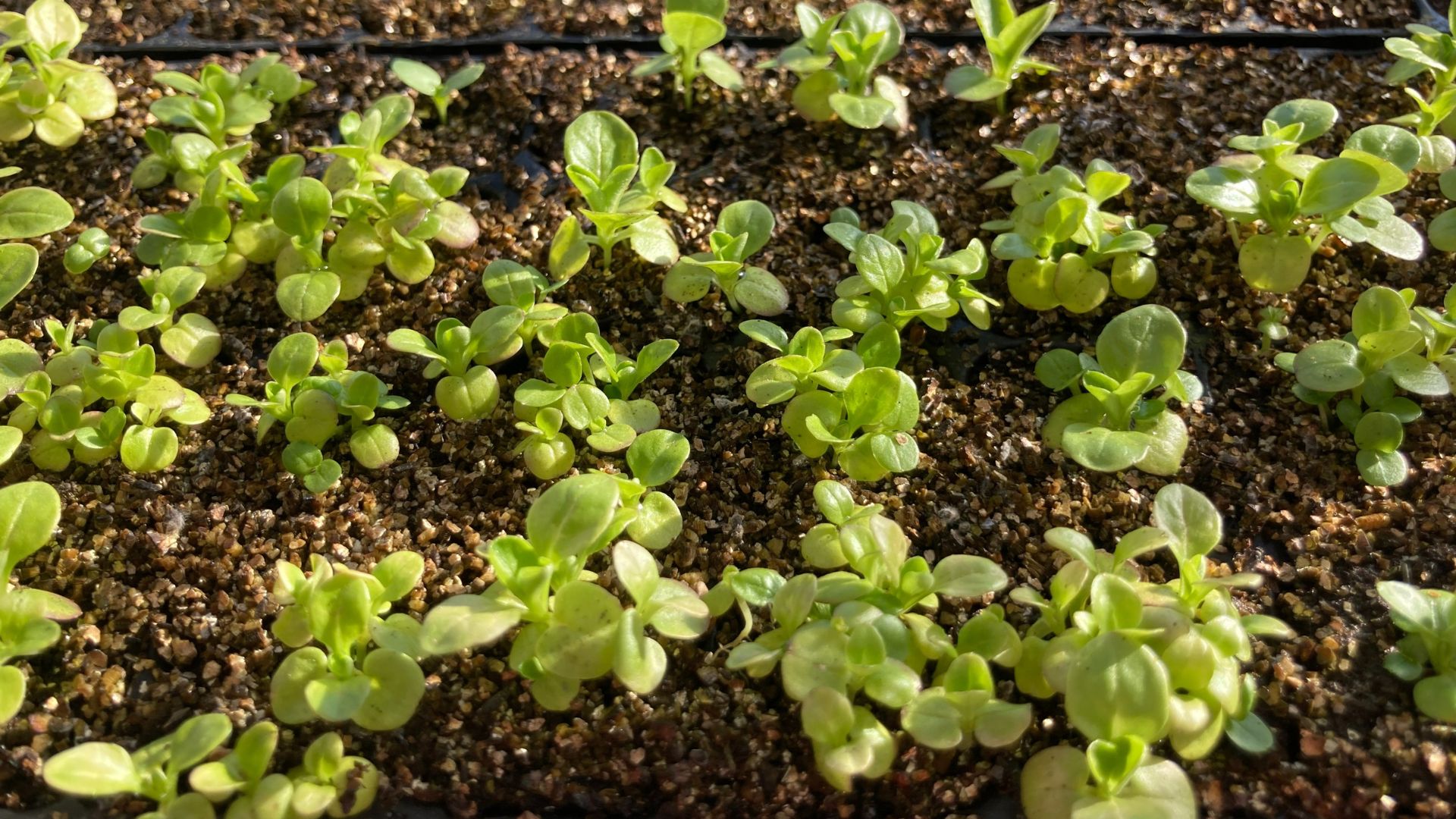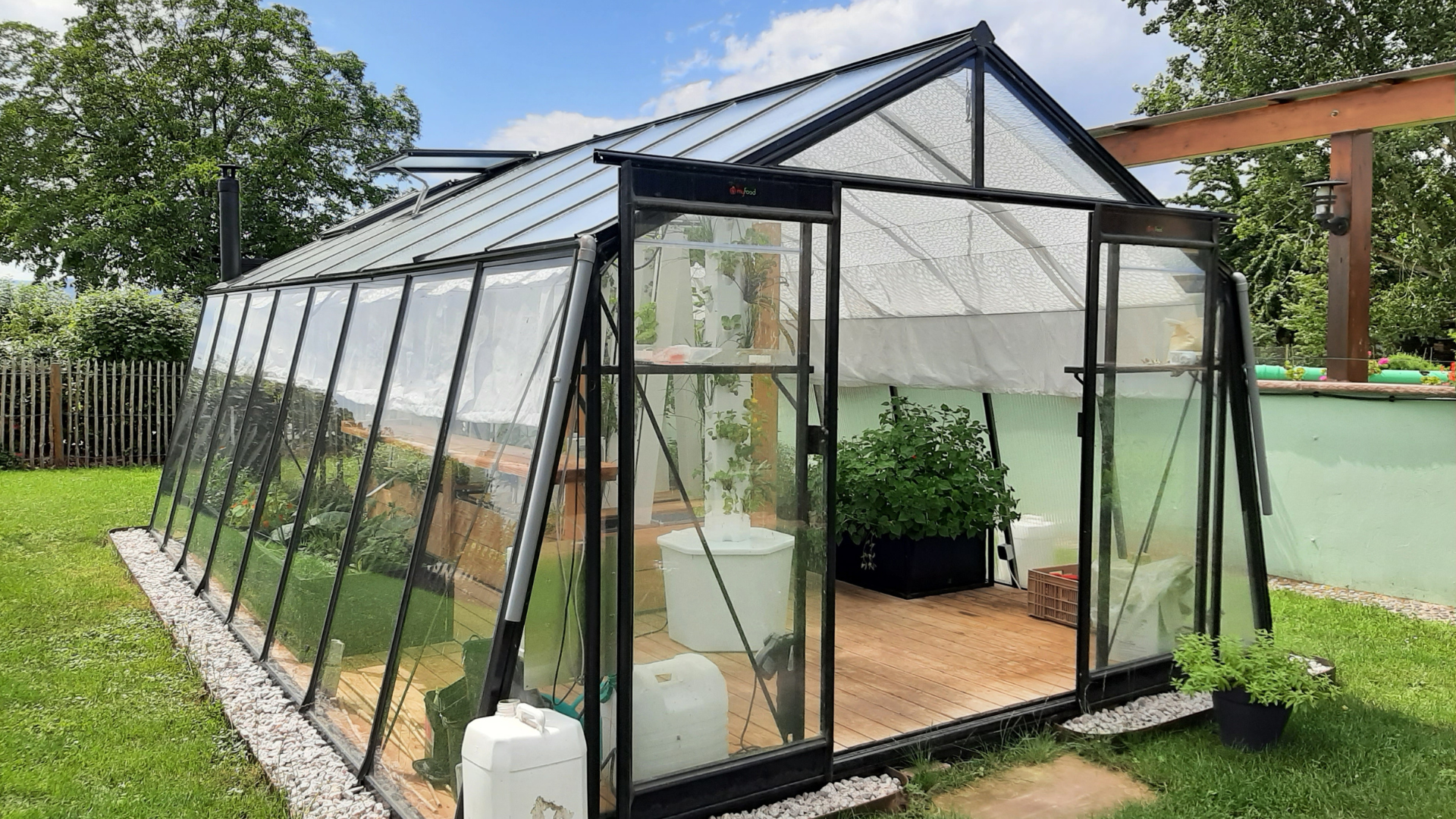Living self-sufficiently on your own plot of land with your own greenhouse? Stop going to the shops and depend on no-one? Install a greenhouse in your garden and feed your whole family?
What is really possible to grow at home? Where is the truth, between the 6-hectare field that feeds 4 people, the 50m² garden that allows you to be self-sufficient or the permaculture forest that feeds you without doing anything? The aim of this article is to put some reality back into the concepts and preconceived ideas about food self-sufficiency.
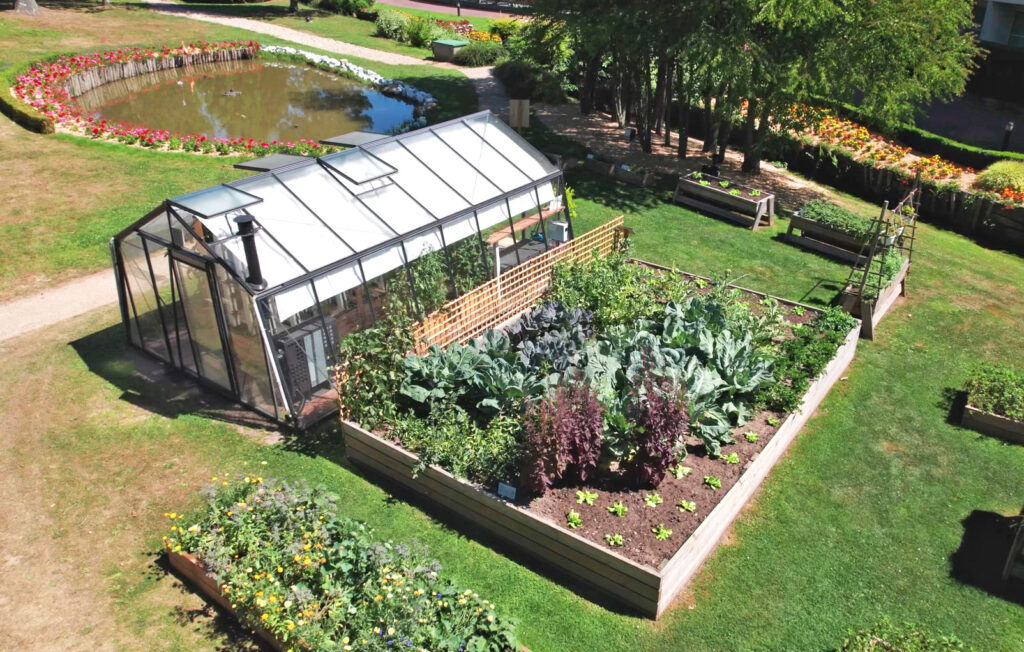
Food self-sufficiency with a vegetable garden?
Before we talk about what you can do with a vegetable garden or a greenhouse, it’s a good idea to talk about what you can’t do. First, let’s go back to basics: what nourishes us?
In a nutshell, the body first needs energy (calories), which is found in carbohydrates, proteins and fats. Then there are the elements needed for the body to function (vitamins, minerals and trace elements). Needs will vary greatly depending on the person’s physical activity and the season. A manual, physical job or working outdoors in winter will consume more calories. Conversely, being sedentary while teleworking does not require the same amount.
It is estimated that the average person needs 2000 kcal per day. However, calories are primarily found in oils, oilseeds (nuts, etc.), cereals, honey, meat, eggs, etc. For example, for every 100g, sunflower oil provides 900 kcal, bread or pasta 350 kcal, hummus 140 kcal, beans 100 kcal and tomatoes 18 kcal.
Producing oil or cereals
So, when it comes to producing calories, we shouldn’t expect to produce most of our calories in the vegetable garden or the greenhouse. What’s needed is an ecosystemic approach and a quest for diversity. Self-production of oil and cereals is not impossible, but requires land, time and equipment. For oil, you need to plant a walnut tree, a hazelnut tree, an olive tree, etc. and invest in a manual or electric press. For cereals, small-scale wheat growing is possible, but it all depends on how involved you are. Take a good look at the time required and the investment in equipment. For small-scale cereal production, you could also consider growing quinoa, even though it has a lower calorie content.
On the other hand, greenhouse and container growing can be an interesting way of producing pulses. For example, growing chickpeas, broad beans, etc. will provide a useful source of calories, carbohydrates and plant proteins. It is possible to expect several dozen kilos per m² of chickpeas from a permaculture container crop.
For a household busy with work, children, day-to-day activities, etc., it’s best to focus on fruit, vegetables and nutritious foods. In this case, leave the grain production to your favorite farmer.

Self-sufficiency in fruit and vegetables, how far can you go?
This way to the vegetables
In concrete terms, with a 22m2 Myfood Family Production greenhouse equipped with 5 permaculture tanks (perma module) and twenty-four vertical aquaponics towers (with extension module) – Investment: €13,000 incl. VAT – here’s the expected productivity:

And if the kilos don’t mean anything to you, this corresponds to a vegetable coverage of 60 to 80% per year for 3 to 4 people. That’‘s an approximate autonomy of:
🥬Leafy vegetables (lettuce, cabbage, spinach, etc.) = 100%.
🍅Fruit vegetables (tomatoes, cucumbers, aubergines, etc.) = 100%.
🥦Flowering vegetables (artichoke, broccoli, etc.) = 75%
🌿Stem vegetables (fennel, kohlrabi, celery, etc.) = 100%.
🧅Bulb vegetables (leeks, onions, garlic, etc.) = 90%.
🥕Root vegetables (carrots, radishes, beetroot, etc.) = 60%.
🫘 Legumes (beans, broad beans, etc.) = 50%.
🍃Herbs (basil, parsley, chives, etc.) = 100%.
To supplement the production of vegetables that cannot be grown in a greenhouse (additional root vegetables or pulses, potatoes, pumpkins, etc.) and aim for 100% family self-sufficiency, we recommend adding large outdoor permaculture tubs and a tuber kit for Jerusalem artichokes or sweet potatoes.
To find out more about the return on investment for a Family greenhouse, read our article on the subject.
Of course, these ratios vary according to individual diets, and you need to adapt them to suit your needs. We also strongly recommend that you invest in a steriliser.
What about fruit?
It’s very easy to grow certain types of fruit in greenhouses, including strawberries, melons, watermelons, grapes and so on. They’re easy to grow in aquaponics or in containers. The greenhouse (especially with an extension) can also house your potted Mediterranean plants: lemon, orange, grapefruit or mandarin trees.
Now, if you want to produce enough fruit to be self-sufficient, it’s essential to have several fruit trees on your plot (apples, pears, plums, etc.) and to use conservation methods for the winter.
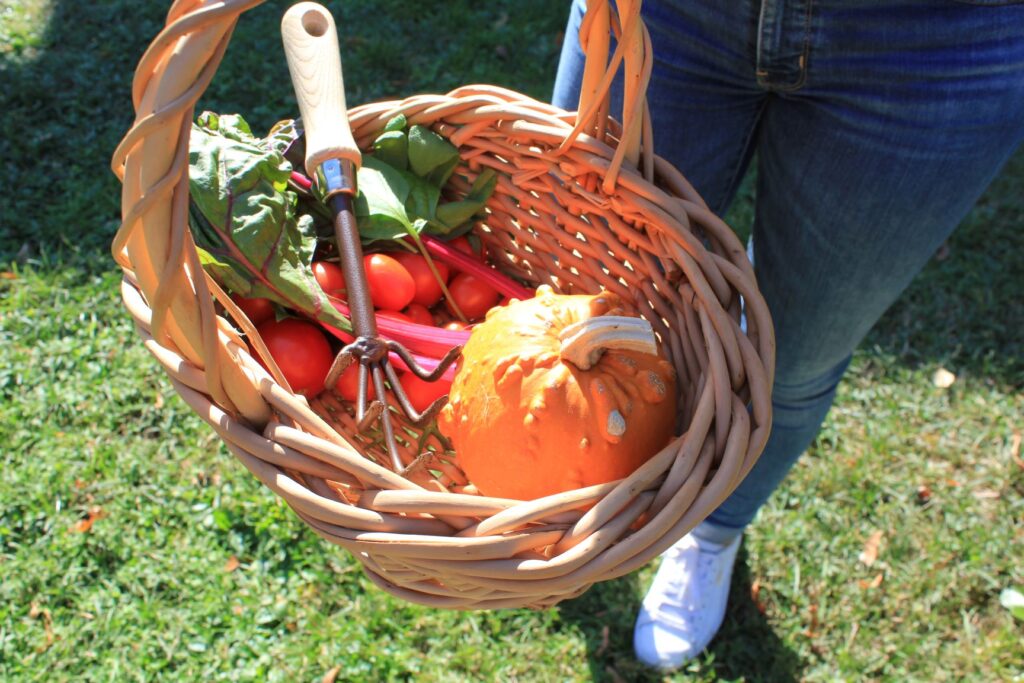
How can I produce protein at home?
For protein production, here are the options available to you:
Raising edible fish
The great advantage of aquaponics, apart from its environmental benefits, is that you can raise fish and eat them. You need to choose the right variety to suit your climate and the time of year. Properly fed, a farmed fish can easily reach 500g in a year (maximum size). You can therefore expect to produce up to thirty kilos of fish a year.
You can introduce fish as your production system evolves, so check out our recommendations for choosing fish and introducing them into the system. With a little experience and success, you can then choose to switch to edible fish with carp for all seasons, trout for winter or tilapia in summer.

Eggs or chickens?
Another easy way to source protein is to set up a chicken coop. It’s common for people who have never had chickens to have a preconceived notion of keeping them. In reality, if you set up a well-configured henhouse with an automatic door, simple cleaning, and water and seed distribution, hens really aren’t a constraint. It’s not time-consuming, noisy or smelly. All you need to do is give them enough space and grass. You’ll have an average of one egg per hen per day (of much higher quality than supermarket eggs), and you can feed the hens all your kitchen scraps – practical!
Vitamins, minerals and trace elements
We underestimate the need for vitamins, minerals (calcium, magnesium, etc.) and trace elements (iron, copper, zinc, etc.). What’s more, we also greatly overestimate the nutritional content of the fresh food we buy today, even in organic shops or local markets. Soil impoverishment, modified seeds and monoculture inevitably lead to a significant reduction in essential micro-nutrients. So, it’s important to eat ultra-fresh, nutritious food. In addition, ‘superfoods’ are recommended as part of a complete and balanced diet.
Spirulina protection at home
The ‘miracle’ solution for vitamin A, B, iron, iodine and more: fresh spirulina. Fresh spirulina. We’ve already talked about this in a recent article: “Spirulina, a super food” and we’ll be talking about it again soon in a specific article. You can find out more about our production module on our Spirulina Module product sheet and order it directly from our shop.
Growing micro-sprouts
Finally, microfoams are an essential superfood that can be used to supplement and diversify your diet. The term “microgreens” refers to the second stage of germination. They differ from sprouted seeds in that they are at a more advanced stage of growth. It’s worth noting that 30g of young broccoli sprouts provide a quantity of antioxidants equivalent to 1kg of mature broccoli! To find out more about the species, their characteristics and nutritional content, take a look at our wiki on the subject.

In a nutshell
To sum up, self-sufficiency is not only easy to achieve with fruit, vegetables and protein, but more complex with calorie-rich foods such as cereals and oils. Finally, it’s worth noting that the Western diet today is generally far too high in calories. We often eat more than we need. More aware eating would help us to become more resilient and self-sufficient.
If this article has helped you to see things more clearly, don’t hesitate to share it with your friends and family here:

